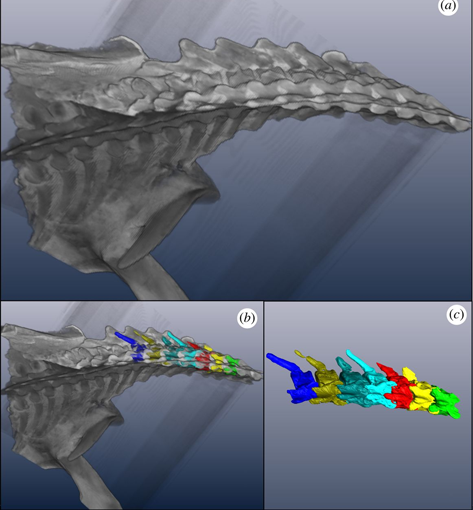A method for deducing neck mobility in plesiosaurs, using the exceptionally preserved Nichollssaura borealis

The elongate-necked aquatic plesiosaurs existed for 135 Myr during the Mesozoic. The function of this elongate neck is a point of debate. Using computed tomography and three-dimensional (3D) modelling, the range of motion (ROM) of the plesiosaur Nichollssaura borealis neck was assessed. To quantify the ROM, the intervertebral mobility was measured along the cervical vertebral column. This was done by manipulating the 3D models in the lateral and dorsoventral directions during two trials. The first assessed the mean intervertebral ROM between pairs of cervical vertebrae along the entire column, and the second assessed ROM with reduced intervertebral spaces. The results suggest that there may be preference for lateral neck movements in N. borealis, which could correspond to an ecological function related to prey capture. This study demonstrates that 3D modelling is an effective tool for assessing function morphology for structures where no good modern analogue exists.